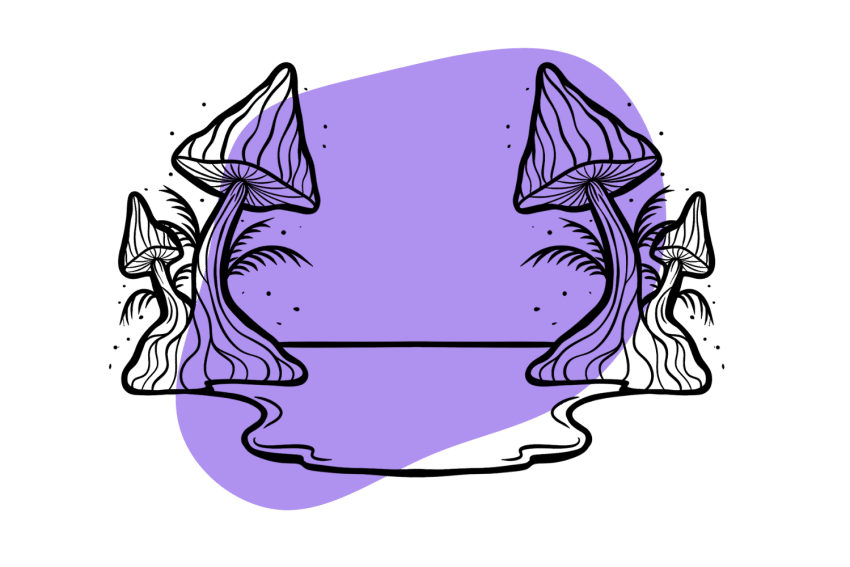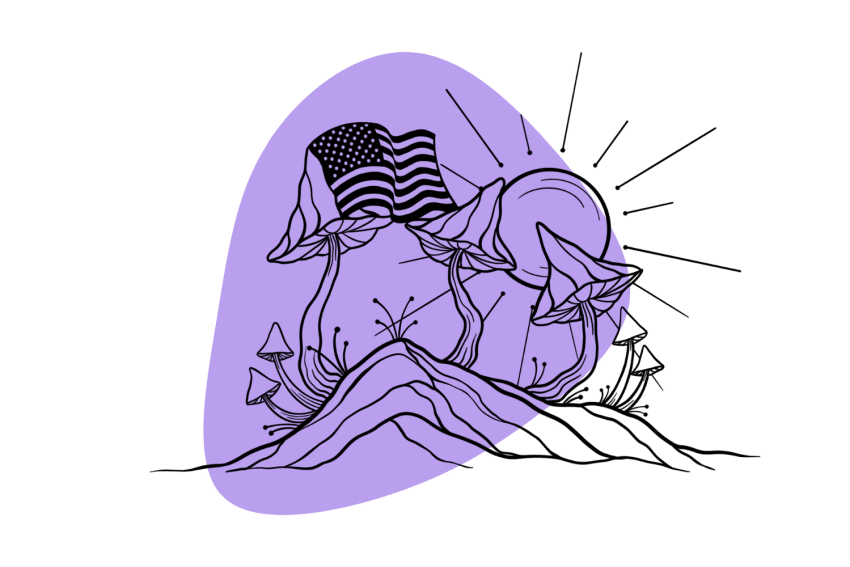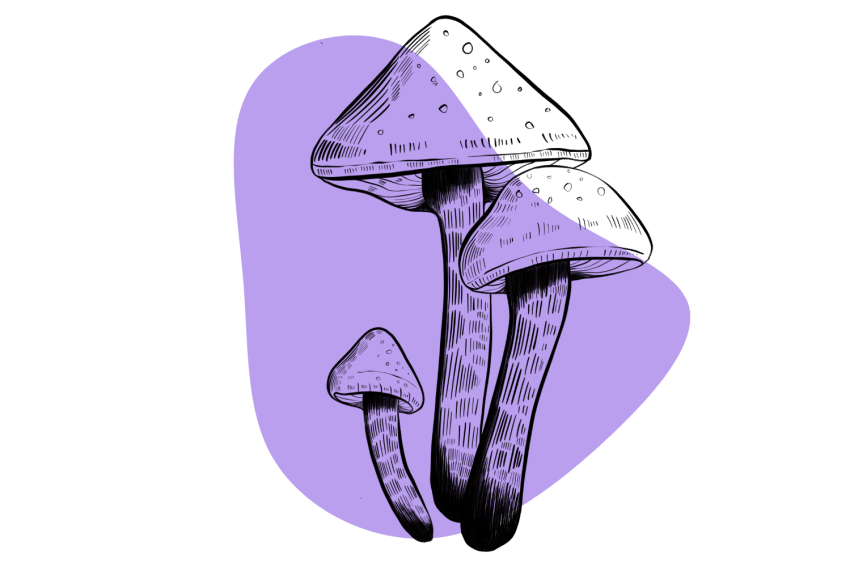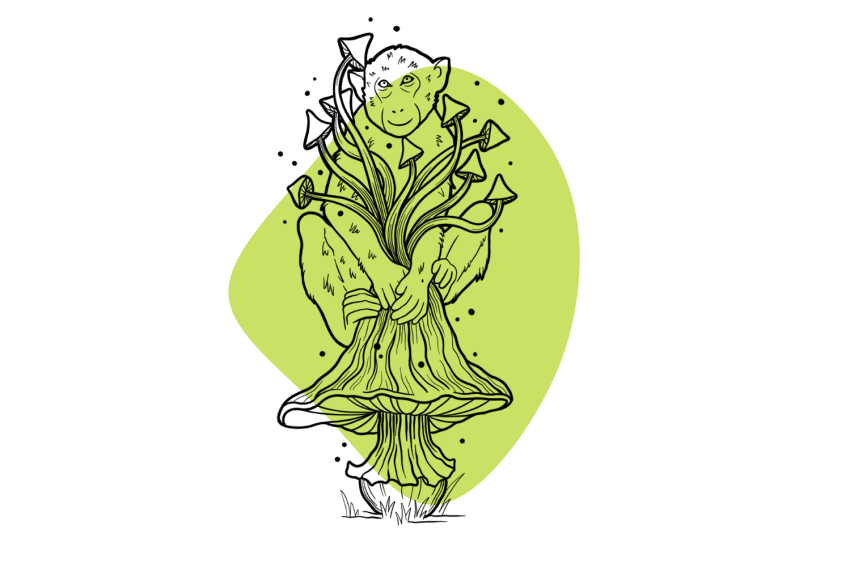Divine Intervention: The Golden Halo Magic Mushroom Strain
This angelic strain is capable of producing a large number of fruits quickly, and it’s surprisingly easy to grow…
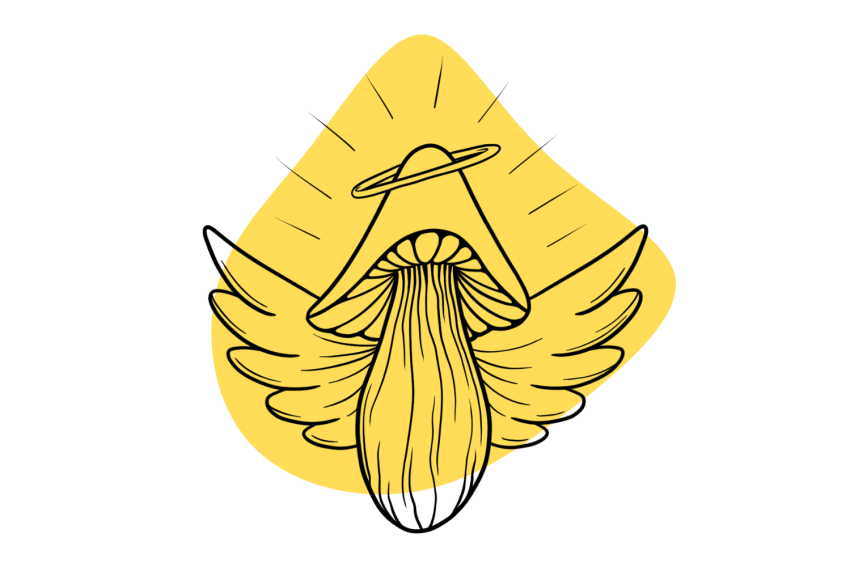
The Golden Halo strain hasn’t been around for long, but it’s gaining in popularity because its genetics have several traits that make it easy for cultivators.
Golden Halo is a strain of the species Psilocybe cubensis. It’s famed for being a fast colonizer and is easy to grow thanks to its resistance to bacteria and mold. Golden Halo genetics are incredibly easy to work with — but it hasn’t always been that way.
Related: List of Psilocybin Mushroom Species
The history of the Golden Halo strain is somewhat blurry, and there’s a lot of confusion about who collected the first sample and where it’s from.
The original spore samples of this strain were unstable. It was challenging to produce dense flushes of mushrooms with these genetics. In 2017, a group of keen mycologists and amateur mushroom cultivators from the Shroomery forum worked together to stabilize the strain. They were successful, and they spread the resulting spores throughout the community.
Now, Golden Halo genetics are available from vendors that ship to the United States, Canada, the United Kingdom, and mainland Europe.
Golden Halo mushrooms are medium to large. They have large flat golden-colored caps that are dark in the centre, becoming lighter at the rim. The stems are long, relatively thin, and white. It’s possible to produce dense clusters of shrooms in the first and second flush, but mushroom production becomes sparse through the third.
It has an average potency comparable to Golden Teacher and the Lipa Yai strain.
Related: 100+ Magic Mushroom Strains Explained
In this article, we’ll be looking at the Golden Halo strain by:
- Attempting to uncover its origins
- Assessing its potency and effects
- Looking at its potential relatives
- Finding out where to purchase genetics
- Learning how to grow the strain
We’ll also look at a few other fast-colonizing easy-to-grow strains for the cultivator that wants a quick turnaround.
Golden Halo Specs
| Potency | Average |
| Cultivation | Easy |
| Species | Psilocybe cubensis |
| Substrate Recommendation | Rye Grain, Bird Seed, BRF & Vermiculite |
| Sold By | Spores 101 (🇺🇸/🇨🇦), Miracle Farms (🇺🇸/🇨🇦), Sporeslab (🇨🇦), The Magic Mushrooms Shop (🇪🇺) |
History of the Golden Halo Strain
Apparently, Steven Wood collected the original sample of Golden Halo mushrooms in 2015. He found the mushroom growing in a pasture just outside Kingston, Jamaica. He then distributed its spores throughout the mushroom community. The genetics were incredibly unreliable, so a group from the Shroomery forum began stabilizing them.
Now, the Golden Halo strain is far more stable and can produce dense clusters of decent-sized mushrooms.
Although the story above is widely used across the web to describe the strain, it may not be entirely accurate. Yes, the original spore samples were unstable, and yes, a group from Shroomery gathered together to work on the genetics. However, the original may not be from Jamaica at all.
Due to their similar qulaities, many mycologists and cultivators speculate that Golden Halo is an offshoot of Colombian Rust — a strain that produces a rust-colored spore print. Golden Halo’s spore print is golden — or at least it used to be, hence the name.
The truth is, the lineage of Golden Halo has been lost. We don’t know where it came from, who collected the first sample, and if the spores sold as Golden Halo even come from the original genetics. Regardless, it’s a great strain that’s enjoyed by many cultivators, from beginner to advanced.
Potency & Psilocybin Content
We’ve rated Golden Halo as average — strains in this category have an estimated tryptamine content of 0.5%–0.9%.
Very little is known about the exact tryptamine percentages of the Golden Halo strain. Its recent introduction to the mushroom scene means it has yet to be submitted into the Oakland Hyphae Psilocybin Cup. However, its growing popularity could lead to someone submitting a sample over the next year or two.
The potency of Golden Halo is comparable to the Golden Teacher strain, which produces an average total tryptamine content of around 0.75%. Golden Halo is a good strain for beginner psychonauts because its consistent and average potency reduces the chances of taking too much — especially among inexperienced users.
The Golden Halo strain produces light visual stimulation, good closed-eye hallucinations, and feelings of euphoria. It’s an “energetic” strain that’s highly social — indicating that it could be a good shroom for group consumption with friends.
Genetic Relatives & Variants of the Golden Halo Strain
The origins of the Golden Halo strain are unclear, making it difficult to track down its genetic relatives. However, it’s speculated that it’s an offshoot of Colombian Rust — if this is true, it could have a couple of relatives.
These are the potential relatives of Golden Halo:
1. Colombian Strain
The Colombian strain was first discovered growing in a cattle pasture just outside the village of Villa de Leiva in Colombia — hence the name. It’s famed for its fast colonization speeds — a trait shared by the Golden Halo strain.
The mushrooms are medium to large and have yellow to golden-colored caps and slender white stems. Some of the mushrooms this strain produces are so heavy that they topple under their own weight.
The Colombian strain is said to have average to above-average potency and can produce several dense flushes before succumbing to mold, thanks to its resistance to contamination. It’s a well-rounded strain that can be grown by beginners. Commercial cultivators and those wanting to produce a large amount of mushrooms quickly will love this strain.
2. Colombian Rust Spore
Colombian Rust is an isolation of a mutation produced by the original Colombian strain. It’s remarkably similar to Golden Halo because its spores are orange to golden. When a spore print of Colombian Rust is taken, you’re left with a rust-colored “Halo” on the paper.
This strain shares all the same traits as the original Colombian strain. The mushrooms are medium to large with golden-yellow caps and thin white stems. It has average to above-average potency and gives good yields over several healthy flushes before succumbing to mold growth.
This strain is perfect for the novice cultivator that wants to try growing a shroom that’s unique and more interesting than the standard beginner strains. It’s easy to grow thanks to its contamination resistance, fast and aggressive mycelium, and ability to thrive in a poor environment.
Where to Buy Golden Halo Spores
Golden Halo is a new strain on the market. It’s believed that it began circulating sometime around 2017. Spores for this strain can be a little tricky to find, but not impossible. You’ll find Golden Halo genetics available in the form of spore syringes and grow kits in Canada, the United States, and Europe.
Here are some of our favorite vendors:
- If you live in the United States — Spores 101, Miracle Farms
- If you live in Canada — Spores 101, Sporeslab, Planet Spores
- If you live in Europe — The Magic Mushrooms Shop (🇪🇺), Shiny Spores (🇬🇧)
→ View all spore vendors & grow kit suppliers
How to Grow Golden Halo Mushrooms
Golden Halo is a remarkably fast colonizer. It’s resistant to contamination and can be cultivated effectively by the complete beginner with a bit of knowledge of the mushroom growing process.
The easiest way to cultivate the Golden Halo strain is to use PF-Tek.
PF-Tek is a simple cultivation technique that requires very few pieces of equipment. Most of the equipment can be purchased from hardware stores and pet shops.
This process involves inoculating substrate-filled jars that have been sterilized using a pressure cooker. Golden Halo doesn’t require a specific growing medium, but many people have successfully cultivated it on rye grain, bird seed, and BRF (brown rice flour) mixed with vermiculite.
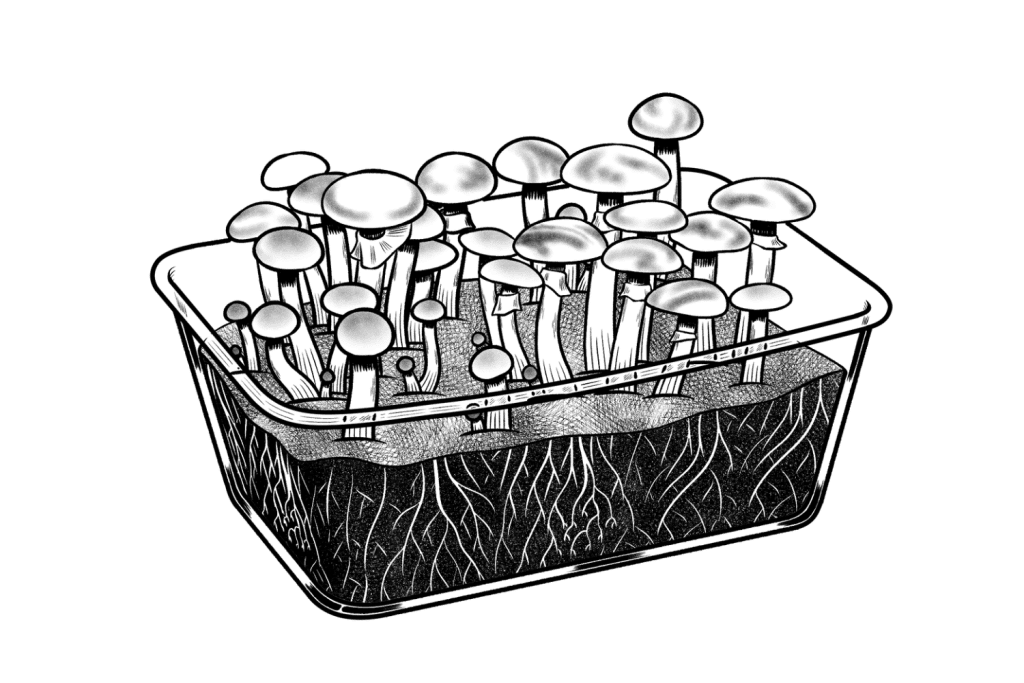
The substrate-filled jars are inoculated using a spore syringe while practicing a sterile procedure. Once that’s done, they can be left to colonize for three weeks — usually more like two if Golden Halo is in a warm, dark environment.
Once the mycelium has completely colonized the substrate, the resulting “cakes” can be removed and placed in a fruiting chamber. A fruiting chamber can be a simple box with ventilation and a heating pad underneath to control the internal temperature.
After two or three days, small mushrooms will begin to develop on the cakes. They can be harvested once they reach maturity. Mushrooms will continue to grow on the cakes until the colony eventually succumbs to mold growth.
You can learn how to properly cultivate mushrooms from spores in this guide on “How to Grow Magic Mushrooms” — this guide provides you with the step-by-step procedure of the PF-Tek cultivation method.
Other Fast-Colonizing Magic Mushroom Strains
The Golden Halo strain is a fast colonizer. The fast-growing rhizomorphic mycelium can fully colonize a substrate quicker than many other strains of Psilocybe cubensis. This makes it a popular choice among people with time constraints that want to produce fruits quickly and efficiently.
If you’re interested in other fast-colonizing magic mushroom strains, take a look at these:
1. Z-Strain (ZS)
The Z-Strain is one of the most tenacious strains on the market. The mycelium is exceptionally aggressive and tends to colonize substrate 10 to 20% faster than the typical Psilocybe cubensis strain. They’re also fast fruiters, with mushrooms appearing from the mycelium almost immediately after transfer to the fruiting chamber.

The shrooms have above-average potency and are medium to large. They grow in dense clusters, and several healthy flushes are possible with a perfect growing environment. The Z-Strain can be a challenge for the beginner cultivator because it’s prone to aborts. However, the intermediate cultivator should have no problem growing it.
This is the best option for commercial growers or those looking to quickly produce psilocybin-containing shrooms. If the growing environment is set up correctly and you’re religious with sterile practices, this strain could make some of the best results you’ve ever seen.
2. Allen Strain (AS)
The Allen Strain is named after the person that discovered the first sample — “Mushroom” John Allen. This is one of the many strains John discovered during his travels through Southeast Asia in search of Psilocybe cubensis in the 1990s. He found it in Thailand, near Ban Tailing Ngam on the island of Koh Samui.
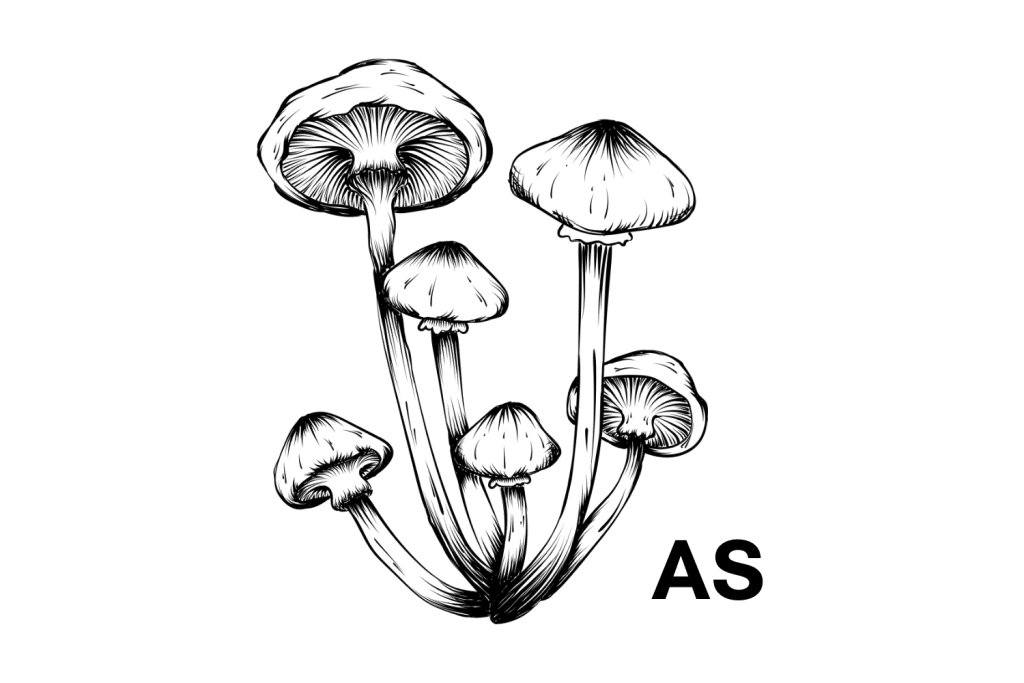
It’s very popular in the mushroom community, and loved by cultivators for its aggressive colonization speed. It will colonize substrate around 10-20% faster than most other strains.
It produces tall, thin mushrooms with gold caps and white stems with average potency. Several dense flushes are possible before the colony eventually succumbs to mold growth. This is a great beginner strain.
3. Wollongong (WOLL)
The Wollongong strain is named after its place of discovery — the city of Wollongong, just south of Sydney in Australia. For decades, it’s been a popular choice among amateur cultivators in Australia. Recently, it broke the confinements of the island nation and made it to the North American market through Ralphsters Spores.

This strain is a notoriously aggressive colonizer capable of producing several dense flushes before succumbing to mold growth. The mushrooms are relatively large as cubes go, and they’re considered average in terms of potency.
This one is simple to grow, and gives good yields quickly thanks to its fast colonization and fruiting times. The Wollongong strain is suitable for beginners, commercial growers, and people who want a quick turnaround.
4. Peru Strain (PER)
The Peru strain was first discovered in the mountainous regions of Peru, growing in manure from cattle and llamas. This strain is well-rounded. It’s a notoriously aggressive colonizer and fast fruiter. It has great contamination resistance and can thrive in an unoptimized environment.
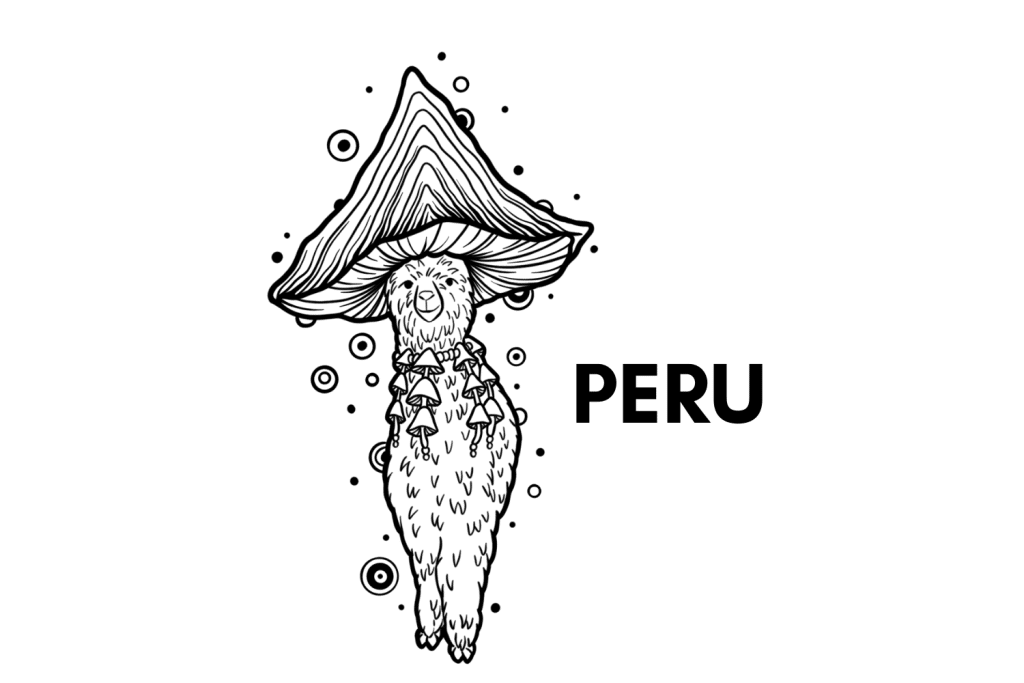
The mushrooms are medium-sized with large flat disk-shaped caps and light-colored thin stems. The potency average, but massive yields are possible through several dense flushes.
It’s ideal for beginner growers and those looking for a quick turnaround. However, spore samples can be tricky to find, with the only known reliable vendor selling them being Ralphsters Spores.
5. Alcabenzi (ACBZ)
Alcabenzi is usually listed as a hybrid between two species — Psilocybe cubensis (Golden Teachers) and Psilocybe mexicana. However, this is hotly debated because if it were true, the resulting offspring shouldn’t be able to reproduce viable spores. Regardless, it’s been circulating since the early 2000s and popular among cultivators and mycologists.
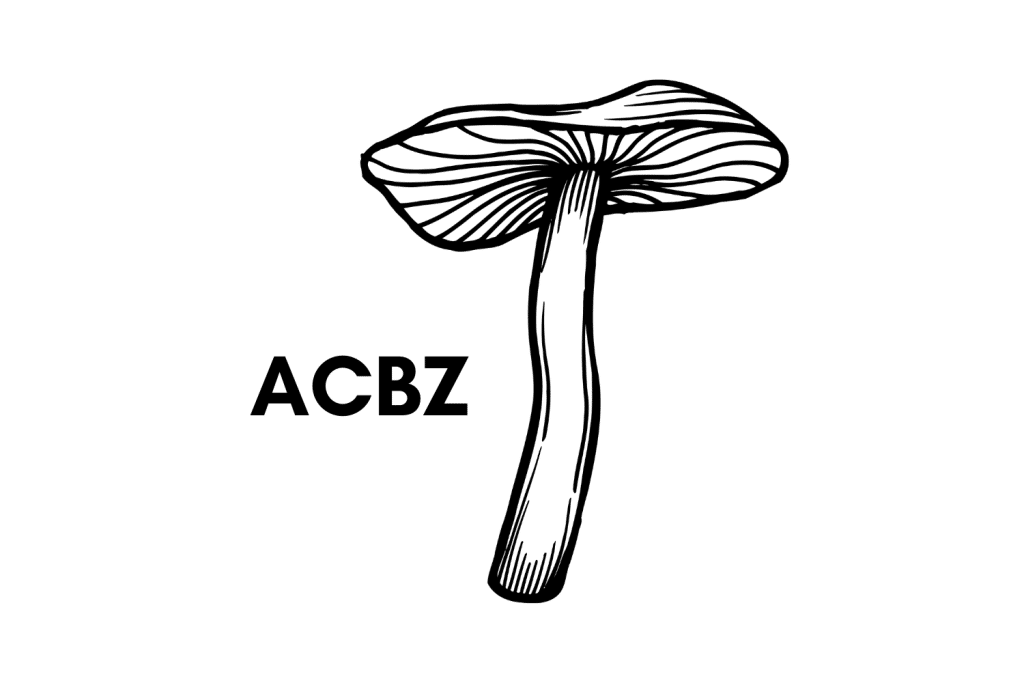
This strain is famed for its aggressive colonization habits and contamination resistance. Growing it is pretty straightforward, and you can easily get dense flushes of medium-sized shrooms with above-average potency.
6. Golden Teacher (GT)
The Golden Teacher strain is one of the most famous strains of Psilocybe cubensis. It has been circulating the spore market since the early 1980s. Its origins are debatable, but many people believe it originated somewhere in the Gulf region of the United States.
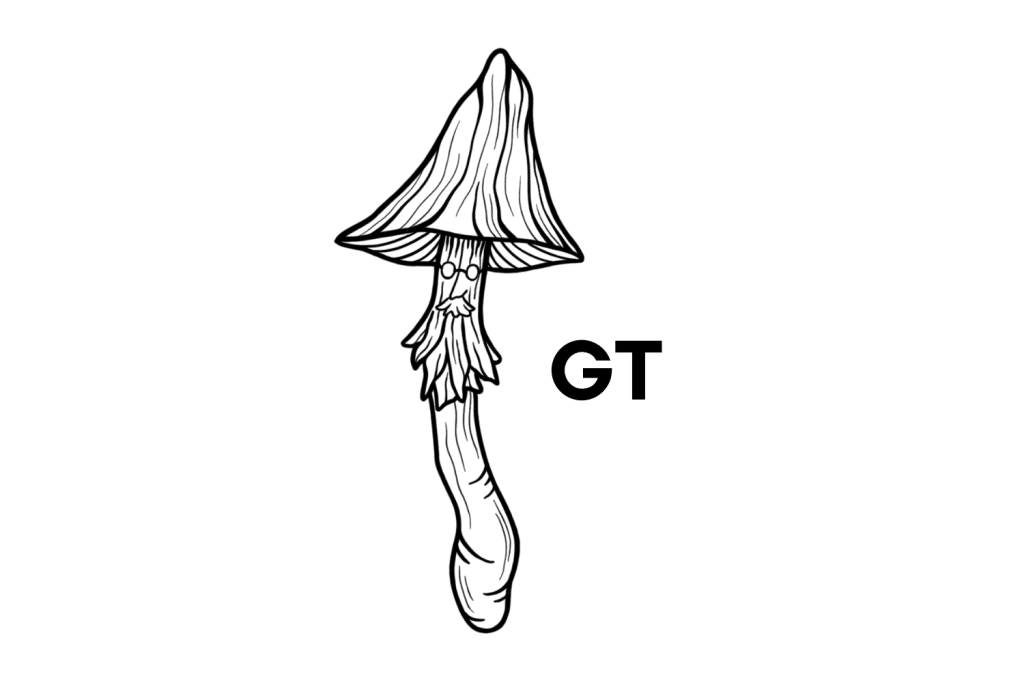
Golden Teacher is often the first strain beginner growers approach because it colonizes quickly, is resistant to contamination, and can thrive in an unoptimized growing environment. There’s a reason it’s a first choice among beginners — it’s a well-rounded strain that’s likely one of the easiest to cultivate.
The mushrooms and potency of Golden Teacher shrooms are rather average. However, it grows quickly and produces huge yields over several dense flushes.
Strains vs. Species: What’s the Difference?
There are hundreds of different species of psychedelic mushrooms. Psilocybe cubensis is one of those species. It’s the most common species of psilocybin-containing mushroom on the planet, with samples found growing in several different countries and environments.
P.cubensis is also the most popular species of psilocybin mushroom. This is because it’s easy to grow in artificially-created environments, unlike many other species.
Golden Halo is a strain of Psilocybe cubensis, just one of the hundreds within the species.
So, what’s the difference between a species and a strain? How can a single species have so many different variations in its mushrooms?
- Species is the term used to describe a family of organisms that share the same biological building blocks. Organisms within a species can successfully breed or exchange genetics to create fertile offspring.
- Strain is the term given to genetic variants within a single species that show differences in traits but belong to the same biological family. Strains from one species can breed or exchange genes to produce fertile offspring.
Golden Halo and Penis Envy are two strains of the Psilocybe cubensis species. Although these two strains look entirely different and have vast differences in tryptamine levels, they can still exchange genes to create fertile offspring, placing them in the same species.
Strains exist in several different species of fungi, plants, and animals. These genetic variants occur naturally to adapt to environmental challenges and conditions, but humans can also create them through selective breeding.
People have created several strains of P. cubensis to produce new traits. We’ve developed highly-potent, resistant, and fast-colonizing strains through selective cross-cultivation. The same has been done with cannabis, giving us around 1,000 strains with differences in potency, yield potential, and appearance.




